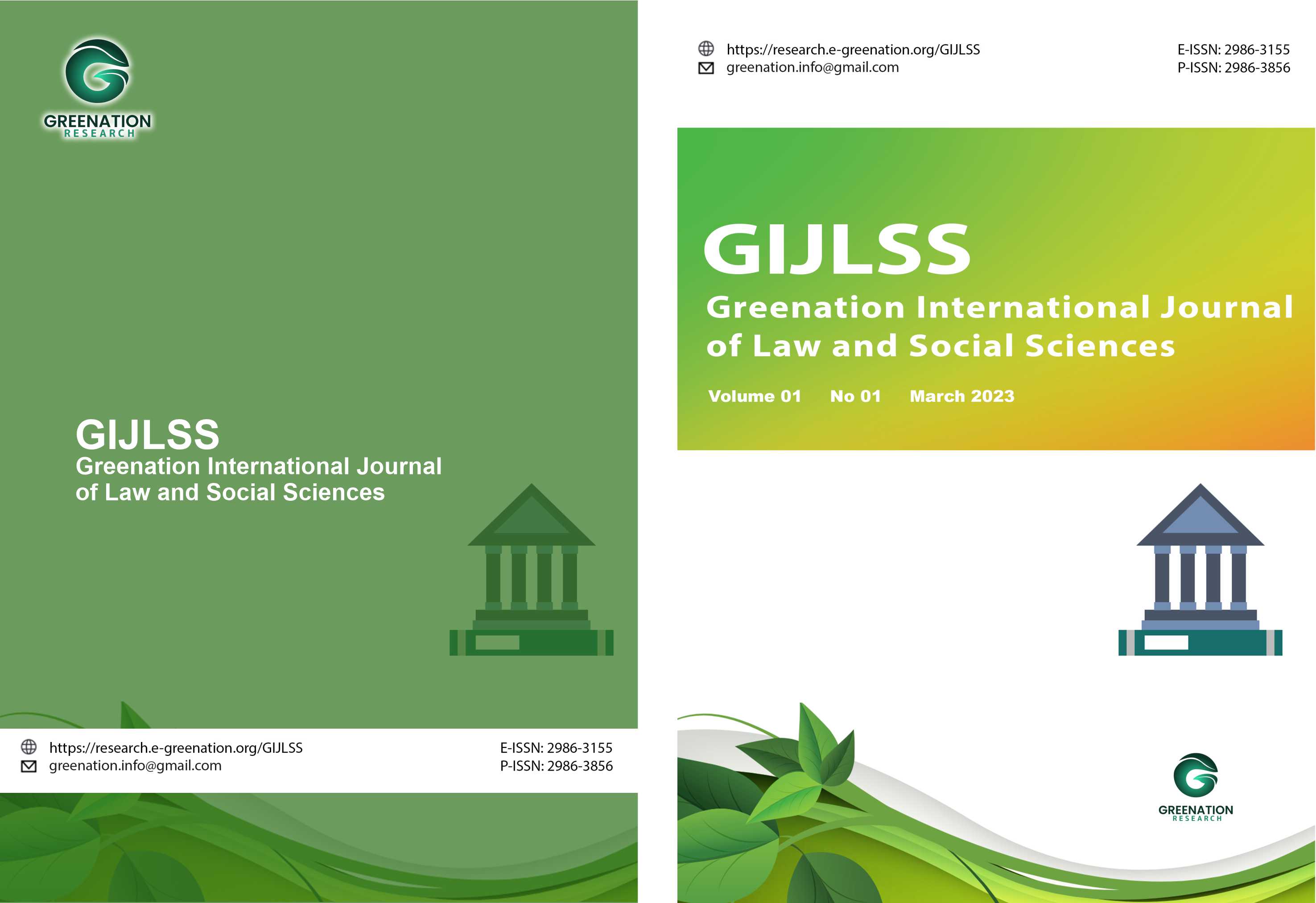Utilization of Artificial Intelligence in Cybercrime Investigation Process and Protection of Suspects' Human Rights
DOI:
https://doi.org/10.38035/gijlss.v3i3.624Keywords:
Artificial Intelligence, Investigation, Crime, Information Technology CrimeAbstract
The use of artificial intelligence (AI) in cybercrime investigations presents an opportunity to increase the effectiveness of law enforcement through digital forensic analysis, crime pattern detection, and electronic evidence processing. However, the application of AI also raises legal challenges, particularly regarding the validity of evidence, the principle of chain of custody, and potential violations of suspects' human rights, such as the right to privacy and the right to legal counsel, as guaranteed in Law Number 1 of 2024 concerning Electronic Information and Transactions, Law Number 27 of 2022 concerning Personal Data Protection, Law Number 8 of 1981 concerning the Criminal Procedure Code, and Law Number 1 of 2023 concerning the Criminal Code. A normative legal analysis shows that current regulations do not specifically regulate the mechanisms for using AI in investigations, thus creating legal uncertainty and the risk of algorithmic bias that could harm suspects. Therefore, legal reforms are needed in the form of developing technical guidelines, AI system audit standards, and specific regulations that balance the effectiveness of law enforcement with the protection of human rights. Harmonizing technology, due process principles, and human rights protection will ensure that the use of AI not only improves investigative capacity but also strengthens legal certainty and the legitimacy of criminal justice processes in the digital era.
References
Agustin, S. (2024). Dampak Kemajuan Teknologi Informasi Era Digital Terhadap Keamanan Data Pribadi Tantangan Dan Penanggulangan Terhadap Kejahatan Cyber. Jurnal Penelitian Multidisiplin Bangsa, 1(6), 500-504.
Aini, N., & Lubis, F. (2024). Tantangan Pembuktian Dalam Kasus Kejahatan Siber. Judge: Jurnal Hukum, 5(02), 55-63.
Ariyadi, F. (2025). Algorithmic Bias Dalam Restorative Justice: Ancaman Bagi Marginal. National Multidisciplinary Sciences, 4(3), 148-158.
Budiman, M. A. (2022). Penggunaan Agen Berbasis Intelijen Untuk Menangani Kejahatan Siber. Journal of Innovation Research and Knowledge, 1(8), 455-462.
Butarbutar, R. (2023). Kejahatan siber terhadap individu: Jenis, analisis, dan perkembangannya. Technology and Economics Law Journal, 2(2), 3.
Dzaky, M. A. T., & Edrisy, I. F. (2025). Strategi Pencegahan Kejahatan Siber di Indonesia: Sinergi antara UU ITE dan Kebijakan Keamanan Digital. PESHUM: Jurnal Pendidikan, Sosial dan Humaniora, 4(2), 3614–3625.
Hardhika, R. (2023). Transformasi Digital Wajah Peradilan: Peran Artificial Intelligence Dalam Penguatan Integritas. Judex Laguens, 1(2), 341-380.
Helmawansyah, M. (2021). Penggunaan Barang Bukti Elektronik yang Dijadikan Alat Bukti dalam Perkara Pidana. Journal of Law (Jurnal Ilmu Hukum), 7(2), 527-541.
Iman, M., & Firdaus, A. (2025). Akselerasi Teknologi: Konsep Pengawasan Penyidikan Menggunakan Sistem Eletronik. National Multidisciplinary Sciences, 4(3), 52-57.
Kushariyadi, K. AKushariyadi, K., Apriyanto, H., Herdiana, Y., Asy’ari, F. H., Judijanto, L., Pasrun, Y. P., & Mardikawati, B. (2024). Artificial intelligence: Dinamika perkembangan AI beserta penerapannya. Jambi: PT. Sonpedia Publishing Indonesia.
Maesaroh, R. S. (2024). Tantangan Keamanan Siber dan Implikasinya terhadap Hukum Kenegaraan: Tinjauan atas Peran Negara dalam Menjamin Ketahanan Digital. Staatsrecht: Jurnal Hukum Kenegaraan dan Politik Islam, 4(2), 255-274.
Maimun, A. &. (2025). Penggunaan Ai Dalam Proses Pemeriksaan Tersangka Dalam Penyidikan Di Kepolisian. National Multidisciplinary Sciences, 4(3), 33-40.
Mecca, A. S. P., Hidaya, W. A., & Tuasikal, H. (2025). Pemanfaatan Teknologi Kecerdasan Buatan (Artificial Intelligence) dalam Sistem Peradilan Pidana di Indonesia. Jurnal Sosial Teknologi, 5(6).
Mursyid, M. P. (2025). Rekonstruksi Peran Digital Forensik Dalam Penyidikan Tindak Pidana Siber: Analisis Kritis Terhadap Konstruksi Hukum Pidana di Indonesia. Jurnal Tana Mana, 6(2), 289-296.
Nirwan, D., & Sampurna, A. (2025). Menyelaraskan Teknologi dengan Perlindungan Hak Privasi. Juris Prudentia: Jurnal Hukum Ekselen, 7(2).
Pratama, M. A. (2024). Kompromi Etis dalam AI Generatif Memetakan Konflik Nilai Keadilan, Transparansi, dan Utilitas. Judge: Jurnal Hukum, 5(02), 220-229.
Ramadhan, G. R. (2024). Penerapan Machine Learning Dalam Pengenalan Wajah Untuk Sistem Keamanan. Jurnal Dunia Data, 1(4).
Rosyadi, S. Y. (2025). Pembaruan Hukum di Era Digital: Aspek Hukum terhadap Validitas Hasil Analisis Artificial Intelligence Sebagai Alat Bukti Dalam Penegakan Hukum Pidana Pertambangan. Judge: Jurnal Hukum, 6(03), 563-577.
Rustiyana, R. J. (2025). Pemanfaataan AI dalam Keamanan Siber. Jambi: PT. Sonpedia Publishing Indonesia.
Usman, N. &. (2024). Perlindungan Hukum Data Pribadi dan Pertanggungjawaban Otoritas Terhadap Keamanan Siber Menurut Tinjauan UU PDP. DOKTRINA: JOURNAL OF LAW, 7(2), 178-201.
Yuserlina, A. (2021). Pelaksanaan Pemberian Bantuan Hukum Pada Tingkat Penyidikan Berdasarkan Kitab Undang-Undang Hukum Acara Pidana (KUHAP) Di Wilayah Hukum Polres Bukittinggi. Ensiklopedia Social Review, 3(2), 237-246.
Downloads
Published
How to Cite
Issue
Section
License
Copyright (c) 2025 Chitto Cumbhadrika, KMS Herman

This work is licensed under a Creative Commons Attribution 4.0 International License.
Copyright :
Authors who publish their manuscripts in this journal agree to the following conditions:
- Copyright in each article belongs to the author.
- The author acknowledges that the Greenation International Journal of Law and Social Sciences (GIJLSS) has the right to be the first to publish under a Creative Commons Attribution 4.0 International license (Attribution 4.0 International CC BY 4.0).
- Authors can submit articles separately, arrange the non-exclusive distribution of manuscripts that have been published in this journal to other versions (for example, sent to the author's institutional repository, publication in a book, etc.), by acknowledging that the manuscript has been published for the first time at GIJLSS.
























